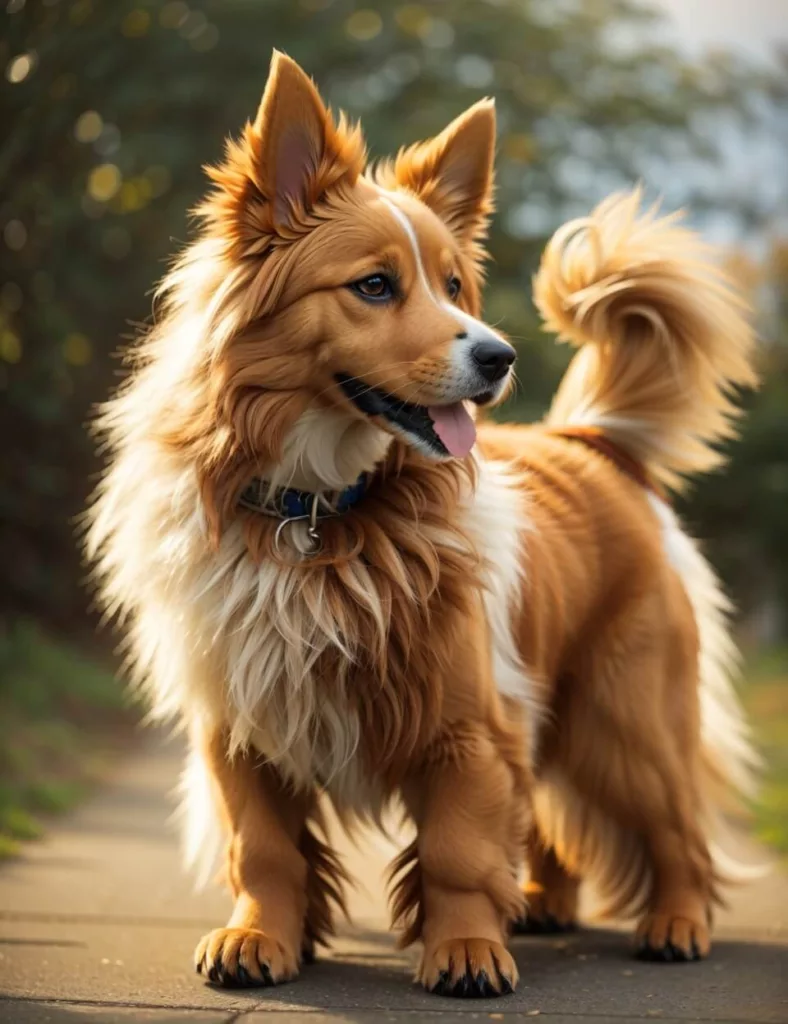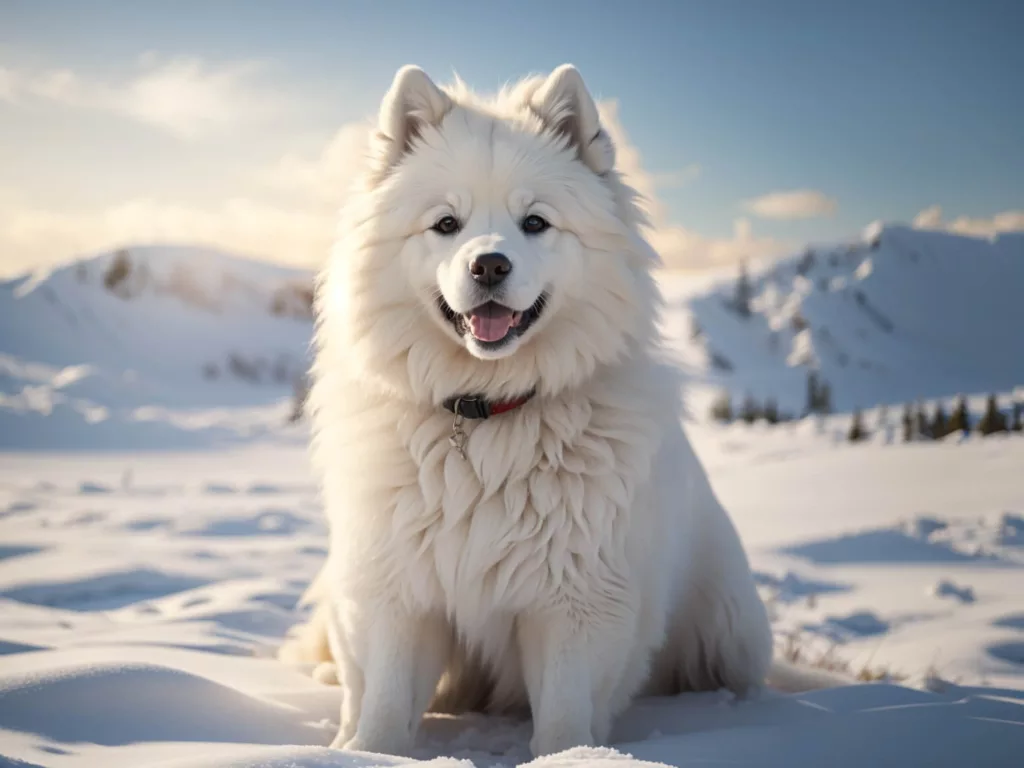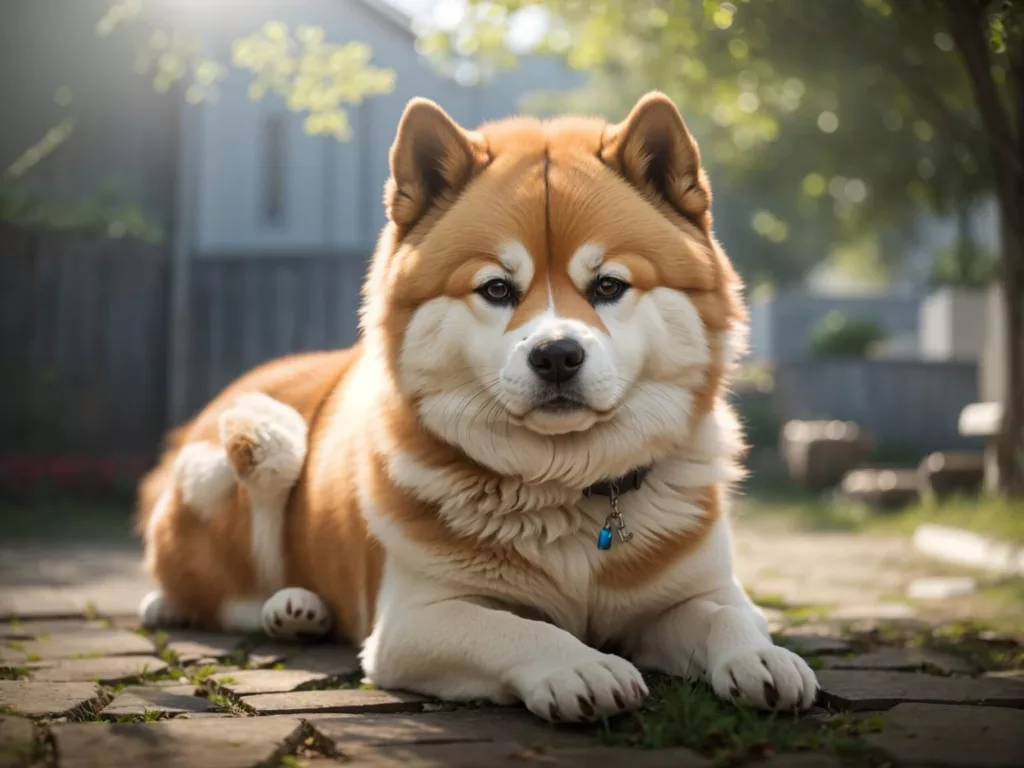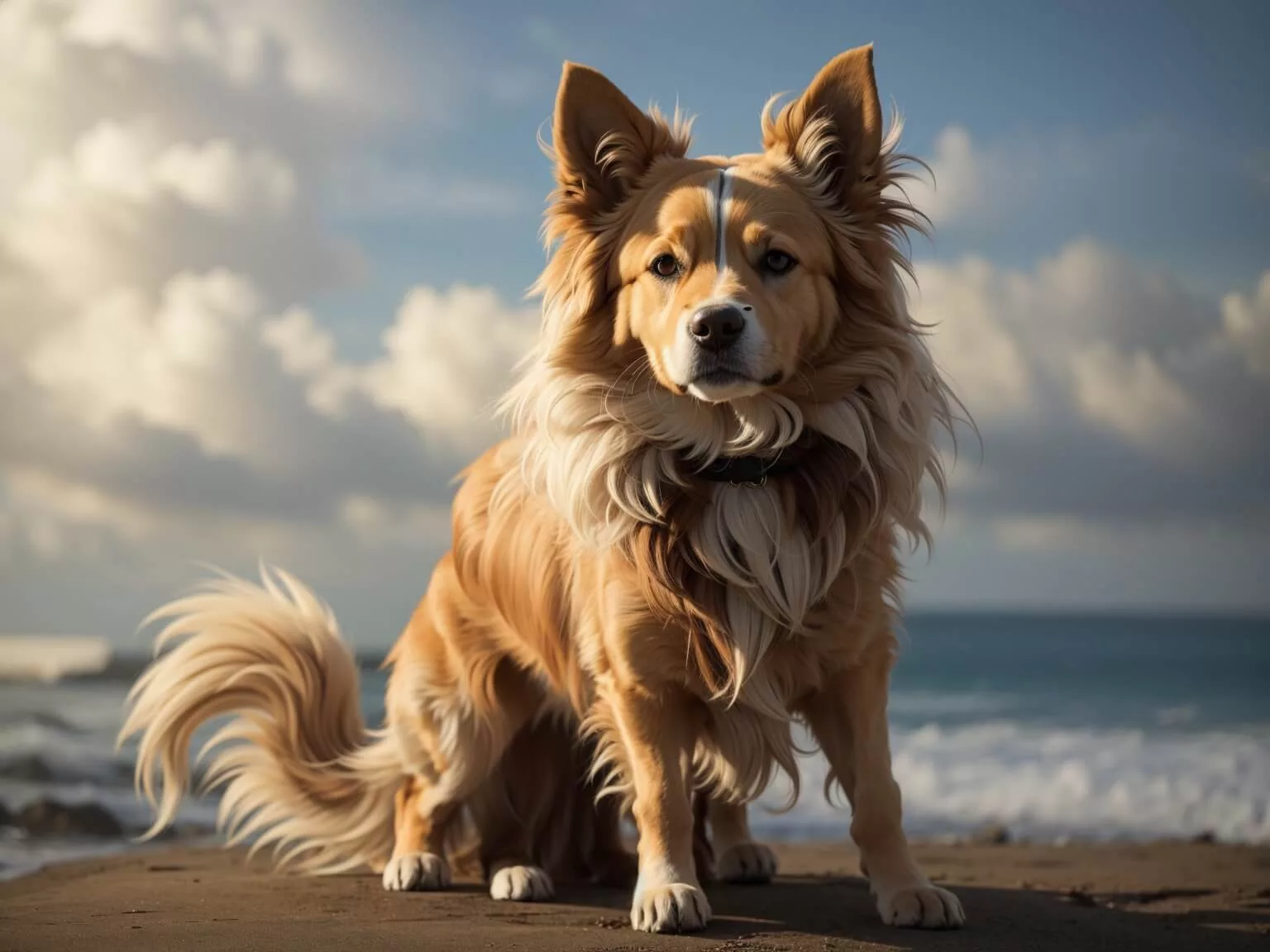Discover What Dog Breeds Have Curly Tails.
As a lover of all things canine, I find myself drawn to the unique characteristics that each breed possesses. One such feature that always catches my eye is a curly tail. It adds a touch of charm and whimsy to any dog, and there are several breeds that boast this delightful trait.
In this comprehensive guide, I will be sharing with you the list of dog breeds that have curly tails. From the Pug’s adorable curled-q tail to the Basenji’s elegant coiled tail, each breed has its distinctive charm.
So, if you’re curious about what dog breeds have curly tails, keep reading, and let’s uncover the list together!

Key Takeaways:
- Dog breeds with curly tails come in various shapes and sizes.
- Curly tails add a touch of charm and whimsy to any dog breed.
- Some popular curly-tailed breeds include the Pug, Basenji, Shiba Inu, and Chow Chow.
- Each breed with a curly tail has its unique personality and characteristics.
- Curly-tailed dog breeds make great companions and family pets.
The Pug: A Curly-Tailed Companion
As a lover of curly-tailed breeds, I have always been fascinated by the adorable Pug. This curly-tailed breed is known for its distinctive wrinkled face and expressive eyes. Their curly-q tail only adds to their lovable and charming appearance.
Pugs are small in size but have a big personality. They are known for their affectionate nature and are incredibly loyal to their owners. Despite their short snouts, Pugs are energetic and playful, making them great companions for families.
Although they may look like a lazy breed, Pugs require regular exercise to maintain a healthy weight and prevent health problems. They also have a tendency to snore and can be prone to breathing issues due to their short snouts.
If you’re considering a Pug as a pet, keep in mind that they do shed quite a bit. Regular grooming and brushing can help minimize shedding and keep their coat healthy and shiny.
Overall, the Pug is a delightful curly-tailed breed that has captured the hearts of many dog lovers. Their adorable curly-q tail is just one of the many reasons why they make such great companions.

| Dog Breed | Origin | Unique Characteristics | Size | Coat Type | Special Note |
|---|---|---|---|---|---|
| Pug | Unknown | Wrinkled face, expressive eyes | Small | Short | Known for their curly-q tail |
| Basenji | Africa | Barkless, yodel-like sound | Medium | Short, fine | Known as the “barkless dog” |
| Finnish Spitz | Finland | Fox-like appearance, yodeling | Medium | Fluffy | Originally used for hunting small game |
| Shiba Inu | Japan | Fox-like looks | Small | Double | Smallest of the six native Japanese dog breeds |
| Norwegian Buhund | Norway | Fox-like appearance | Medium | Unknown | Originally herded reindeer |
| Samoyed | Siberia | “Sammy Smile”, curved tail | Medium-Large | Double | Originally bred as sled dogs |
| Pomeranian | Germany/Poland | Fluffy coat | Small | Double | Originally bred as companion dogs to royals |
| Akita | Japan | Majestic presence | Large | Thick, dense | Known for their loyalty and protective nature |
| Chow Chow | China | Lion-like appearance | Medium | Dense, fluffy | Originally bred as working dogs |
| German Spitz | Germany | Spirited, lively | Small-Medium | Thick, plush | Comes in two varieties: Klein and Mittel |
Basenji: The African Barkless Breed
As we explore the world of curly-tailed dog breeds, the Basenji stands out for its unique characteristics. Originating from Africa, this breed is known as the “barkless dog” due to their unique vocalization. Instead of barking, Basenjis make a yodel-like sound that is both entertaining and intriguing.
Aside from their distinctive vocalization, Basenjis also have a curled tail that adds to their elegant appearance. Their short, fine coat comes in a variety of colors and patterns, including black and white, red, and brindle.
Basenjis are highly intelligent and independent dogs, making them a great choice for experienced dog owners. They are also known for their affectionate nature with their families but may be reserved with strangers. For exercise, they require daily walks and a chance to run and play.
Overall, the Basenji is a fascinating and unique curly-tailed breed with a lot to offer for the right owner. If you are looking for an intelligent and affectionate companion with a beautiful curled tail, the Basenji may be the perfect match for you.
Finnish Spitz: The Finnish Beauty
If you’re looking for a gorgeous curly-tailed breed, the Finnish Spitz is sure to catch your eye. With their fluffy and fox-like appearance, they are a striking breed that always stands out in a crowd. Their curled tail is the finishing touch to their picture-perfect look.
Originating from Finland, Finnish Spitz dogs were originally used for hunting small game, such as squirrels and birds. They are intelligent and agile, which made them perfect for the job. Nowadays, they make wonderful family pets and are always ready for a good playtime.
The Finnish Spitz has a unique characteristic that sets them apart from other breeds: they are known for their “yodeling.” Rather than barking, they use their vocal cords in a different way, resulting in a unique sound that resembles a yodel.
Overall, the Finnish Spitz is a loyal and playful dog with a stunning appearance and a curly tail that is sure to turn heads.
Shiba Inu: Japanese Charm with a Curled Tail
The Shiba Inu is a beloved Japanese breed that boasts an adorable curled tail. With their fox-like looks and spirited personality, Shiba Inus make excellent companions for experienced dog owners. They are intelligent, independent, and loyal.
Originating from Japan, the Shiba Inu is the smallest of the six native Japanese dog breeds. They were originally bred for hunting and are known for their agility and keen sense of smell.
Shiba Inus have a double coat, consisting of a soft undercoat and a straight, harsh outer coat. Their curly tails are carried high and add to their overall charming appearance.
While Shiba Inus may be small in size, they have a big personality. They are confident, bold, and can be stubborn at times. Therefore, they require experienced owners who can provide them with proper training and socialization.
Shiba Inus are notoriously clean and require minimal grooming. However, they are prone to certain health issues such as hip dysplasia and allergies.
If you’re looking for a breed with Japanese charm and a curled tail, the Shiba Inu may be the perfect fit for you.
Norwegian Buhund: The Reindeer Herder
As a breed that originally herded reindeer in Norway, the Norwegian Buhund is a medium-sized dog with a curly tail that enhances its fox-like appearance. Bred for their intelligence and agility, Norwegian Buhunds are friendly, energetic, and loyal companions.
Despite their herding background, Norwegian Buhunds make great family pets as they are highly adaptable and enjoy spending time with their owners. They thrive on human interaction and require regular exercise to keep them mentally and physically stimulated.
The Norwegian Buhund’s curly tail is not just for looks but also serves a practical purpose. Known as a “rudder,” their tail helps them balance while running and turning quickly during herding tasks.
If you’re considering adding a Norwegian Buhund to your family, keep in mind that they require early socialization and training to prevent unwanted behavior. Overall, this curly-tailed breed is an excellent choice for active and loving families who desire a loyal companion.
Samoyed: The Smiling Sled Dog
The Samoyed is a majestic breed with a trademark curved tail that adds to its graceful appearance. These curly-tailed dogs are originally bred as sled dogs and adapted to the harsh Arctic conditions. Their double coat keeps them warm, and their curled tail acts as a rudder when sledding through the snow. But it’s the “Sammy Smile” that makes them stand out: their upturned mouth corners give the impression that they are always grinning.
Samoyeds make excellent family pets. Though gentle and adaptable, the sled dog heritage makes them independent and eager to explore. Consistent, firm training will be necessary to keep them from escaping or becoming overly stubborn. But with the right training, socialization, and exercise, they are loyal companions who will shower you with love and affection.
Pomeranian: A Petite Dog with a Curly Tail
The Pomeranian is a beloved breed known for its fluffy coat and curled tail. These small and charming dogs are also part of the curly-tailed breeds, adding to their appeal. Despite their small size, Pomeranians have a bold and lively personality, making them delightful companions.
Originally, Pomeranians were bred as companion dogs to royals, but now they are a popular breed worldwide. They have a distinctive double coat that requires regular grooming to avoid matting. Their curled tail is plush and adds an extra charm to their overall appearance.
Pomeranians are intelligent, outgoing, and confident. They are social dogs that love attention and enjoy being the center of their owner’s world. They are also great with children, making them a wonderful family pet.
Despite their small size, Pomeranians have a lot of energy and require regular exercise and playtime. Without it, they can become bored and develop destructive behaviors. They thrive in a home where they can receive lots of love and attention, making them an excellent choice for someone seeking a loyal and affectionate companion.
Akita: A Majestic Breed with a Curled Tail
When it comes to curly-tailed breeds, the Akita is a dog that demands attention. Originating from Japan, the Akita is a large and powerful breed that boasts a curled tail, enhancing its regal and majestic presence.
Known for their loyalty, courage, and protective nature, Akitas make excellent guard dogs and companions for experienced owners who are willing to provide structured training, socialization, and exercise.
Akitas are highly intelligent and independent, with a dominant personality that requires early and consistent training to prevent aggressive behavior towards strangers or other animals. They are also affectionate and devoted to their families, making them loyal and protective watchdogs.
The Akita’s curled tail, also known as a “rudder,” adds to their unique appearance and enhances their graceful gait. It is thick and brush-like, featuring a soft and dense undercoat that sheds seasonally. Regular grooming and brushing are necessary to maintain the Akita’s luxurious coat and prevent matting and tangles.
If you are looking for a majestic breed with a curled tail, the Akita may be the perfect match for you. However, keep in mind that they require experienced handling and plenty of exercise to thrive in a domestic environment.
Chow Chow: The Fluffy Lion Dog
Another breed with a distinct curly tail is the Chow Chow. These dogs are known for their dense and fluffy coats, which range in color from cream to black. The Chow Chow’s curly tail adds to their distinctive appearance and is often referred to as a “rudder.”
Chow Chows have a unique and aloof personality, making them independent but loyal to their families. They are wary of strangers and can be protective of their owners. Despite their reserved nature, they are still playful and affectionate with their loved ones.
Originally bred as working dogs in China, Chow Chows are now popular family pets. They are adaptable to different living situations, but their thick coats require regular grooming to prevent matting and tangling.
If you’re looking for a breed that stands out with a curly tail and a lion-like appearance, the Chow Chow might be the perfect companion for you.
German Spitz: A Spirited and Curly-Tailed Companion
When you first lay eyes on a German Spitz, their curly tail is sure to catch your attention. This breed is small to medium-sized and possesses a thick and plush coat that comes in various colors. They are one of the curly-tailed dog breeds that are spirited, lively, and full of energy.
German Spitz dogs are intelligent and alert, making them excellent watchdogs. They are known for their affectionate and loyal nature towards their owners, making them wonderful family pets.
These curly-tailed dogs originated in Germany and come in two varieties: the Klein and the Mittel. The Klein is the smaller of the two, weighing up to 23 pounds, while the Mittel can weigh up to 40 pounds.
German Spitz dogs have a thick, double coat that requires regular grooming. They shed heavily during shedding season, so regular brushing is essential to keep their coat healthy and shiny.
If you’re looking for a lively and spirited companion with a cute curly tail, the German Spitz might be the perfect breed for you.
Conclusion

Curly-tailed dog breeds are captivating and unique, adding a touch of charm to the world of canines. From the African barkless Basenji to the majestic Akita, these breeds come in varied sizes, temperaments, and origins.
One distinguishing feature of these breeds is their curly tails. The coiled tails, sometimes referred to as a “rudder,” add to their adorable appearance.
If you’re considering adding a new furry friend to your family, a curly-tailed breed may be just what you’re looking for. These breeds are known for their loyalty, intelligence, and playful nature.
So whether you’re seeking a protective guard dog or a lively and spirited companion, there’s a breed of dog with a curly tail that suits your preferences. Embrace the uniqueness of these breeds and their distinctive curly-q tails.
So, go ahead and choose your favorite breed from the list of dogs with curly tails mentioned in this guide, and let them bring joy and love into your life for years to come.
FAQs for the Article on Dog Breeds with Curly Tails:
- What is a curly tail in dogs?
- A curly tail in dogs refers to tails that curl upwards, forming either a half-circle, full circle, or even a double curl.
- Which dog breeds are known for having curly tails?
- Some popular breeds with curly tails include Pug, Basenji, Finnish Spitz, Shiba Inu, and Chow Chow, among others.
- What is the significance of the “Sammy smile” in Samoyeds?
- The “Sammy Smile” is a trademark feature of the Samoyed breed, where their upturned mouth corners give the impression that they are always grinning.
- Are all curly-tailed dogs part of the Spitz family?
- Not all, but many curly-tailed breeds, such as the Finnish Spitz and Shiba Inu, belong to the Spitz family.
- What is the purpose of the “rudder” in some dog breeds?
- The “rudder” refers to the curly tail of certain breeds, which helps them in balancing, especially during activities like running, turning, swimming, and navigating currents.
- Why do some dogs have corkscrew tails?
- Corkscrew tails are a result of hemivertebrae, a genetic condition where one or more vertebrae are misshapen.
- Are curly tails common in ancient dog breeds?
- Yes, many ancient breeds like the Akita and Chow Chow are known for their curly tails.
- How does the Norwegian Buhund’s history relate to reindeer herding?
- The Norwegian Buhund was originally bred for herding reindeer in Norway, showcasing their intelligence and agility.
- Are all curly-tailed breeds small in size?
- No, curly-tailed breeds come in various sizes, from small breeds like the Pug to larger breeds like the Akita.
- What is the significance of curly tails in Chinese culture?
- The Chow Chow, with its lion-like appearance and curly tail, has historical significance in Chinese culture and was originally bred as a working dog.
- Are curly-tailed breeds known to be protective or territorial?
- Yes, many curly-tailed breeds, such as the Akita and Chow Chow, are known for their protective and territorial nature.
- Do curly-tailed breeds have specific coat types?
- Curly-tailed breeds can have a variety of coat types, including thick coats, long coats, and fluffy tails.
- Is the curly tail in dogs purely aesthetic, or does it serve a function?
- While curly tails add to the aesthetic appeal of the breed, they also serve functional purposes in some breeds, like acting as a rudder for balance.
- Do any curly-tailed breeds have a history as sledding dogs?
- Yes, the Samoyed and Siberian Husky, both with curly tails, have a history as sledding dogs.
- Are curly-tailed breeds generally intelligent?
- Many curly-tailed breeds, such as the Basenji and Shiba Inu, are known for their intelligence and alertness.
- What is the difference between a plume tail and a curly tail?
- A plume tail is long and feathered, often carried over the back, while a curly tail is coiled or curled upwards.
- Do curly-tailed breeds require special care or grooming?
- Depending on the breed, some curly-tailed dogs with thick or long coats may require regular grooming to prevent matting and tangling.
- Are there any health concerns associated with curly tails in dogs?
- Some breeds with extremely curled or corkscrew tails can have health issues related to their spine, such as hemivertebrae.
- Which curly-tailed breed is known as the “barkless dog”?
- The Basenji is known as the “barkless dog” due to its unique yodel-like vocalization.
- Are curly-tailed breeds suitable for families with children?
- Many curly-tailed breeds, such as the Pug and Samoyed, are known to be affectionate and good with children, making them suitable family pets.
These FAQs provide a comprehensive overview of the article’s content and the unique characteristics of curly-tailed dog breeds.
FAQs for the Article on Dog Breeds with Curly Tails:
- What is a curly tail in dogs?
- A curly tail in dogs refers to tails that curl upwards, forming either a half-circle, full circle, or even a double curl.
- Which dog breeds are known for having curly tails?
- Some popular breeds with curly tails include Pug, Basenji, Finnish Spitz, Shiba Inu, and Chow Chow, among others.
- What is the significance of the “Sammy smile” in Samoyeds?
- The “Sammy Smile” is a trademark feature of the Samoyed breed, where their upturned mouth corners give the impression that they are always grinning.
- Are all curly-tailed dogs part of the Spitz family?
- Not all, but many curly-tailed breeds, such as the Finnish Spitz and Shiba Inu, belong to the Spitz family.
- What is the purpose of the “rudder” in some dog breeds?
- The “rudder” refers to the curly tail of certain breeds, which helps them in balancing, especially during activities like running, turning, swimming, and navigating currents.
- Why do some dogs have corkscrew tails?
- Corkscrew tails are a result of hemivertebrae, a genetic condition where one or more vertebrae are misshapen.
- Are curly tails common in ancient dog breeds?
- Yes, many ancient breeds like the Akita and Chow Chow are known for their curly tails.
- How does the Norwegian Buhund’s history relate to reindeer herding?
- The Norwegian Buhund was originally bred for herding reindeer in Norway, showcasing their intelligence and agility.
- Are all curly-tailed breeds small in size?
- No, curly-tailed breeds come in various sizes, from small breeds like the Pug to larger breeds like the Akita.
- What is the significance of curly tails in Chinese culture?
- The Chow Chow, with its lion-like appearance and curly tail, has historical significance in Chinese culture and was originally bred as a working dog.
- Are curly-tailed breeds known to be protective or territorial?
- Yes, many curly-tailed breeds, such as the Akita and Chow Chow, are known for their protective and territorial nature.
- Do curly-tailed breeds have specific coat types?
- Curly-tailed breeds can have a variety of coat types, including thick coats, long coats, and fluffy tails.
- Is the curly tail in dogs purely aesthetic, or does it serve a function?
- While curly tails add to the aesthetic appeal of the breed, they also serve functional purposes in some breeds, like acting as a rudder for balance.
- Do any curly-tailed breeds have a history as sledding dogs?
- Yes, the Samoyed and Siberian Husky, both with curly tails, have a history as sledding dogs.
- Are curly-tailed breeds generally intelligent?
- Many curly-tailed breeds, such as the Basenji and Shiba Inu, are known for their intelligence and alertness.
- What is the difference between a plume tail and a curly tail?
- A plume tail is long and feathered, often carried over the back, while a curly tail is coiled or curled upwards.
- Do curly-tailed breeds require special care or grooming?
- Depending on the breed, some curly-tailed dogs with thick or long coats may require regular grooming to prevent matting and tangling.
- Are there any health concerns associated with curly tails in dogs?
- Some breeds with extremely curled or corkscrew tails can have health issues related to their spine, such as hemivertebrae.
- Which curly-tailed breed is known as the “barkless dog”?
- The Basenji is known as the “barkless dog” due to its unique yodel-like vocalization.
- Are curly-tailed breeds suitable for families with children?
- Many curly-tailed breeds, such as the Pug and Samoyed, are known to be affectionate and good with children, making them suitable family pets.
Hi, I’m John and I love dogs. Ever since I was a kid, I always wanted to have a furry friend by my side. I grew up with a golden retriever named Max, who taught me a lot about loyalty, friendship, and fun. He was my best buddy for 12 years, and I miss him every day.

One thought on “Discover What Dog Breeds Have Curly Tails – Uncover the List!”
Comments are closed.